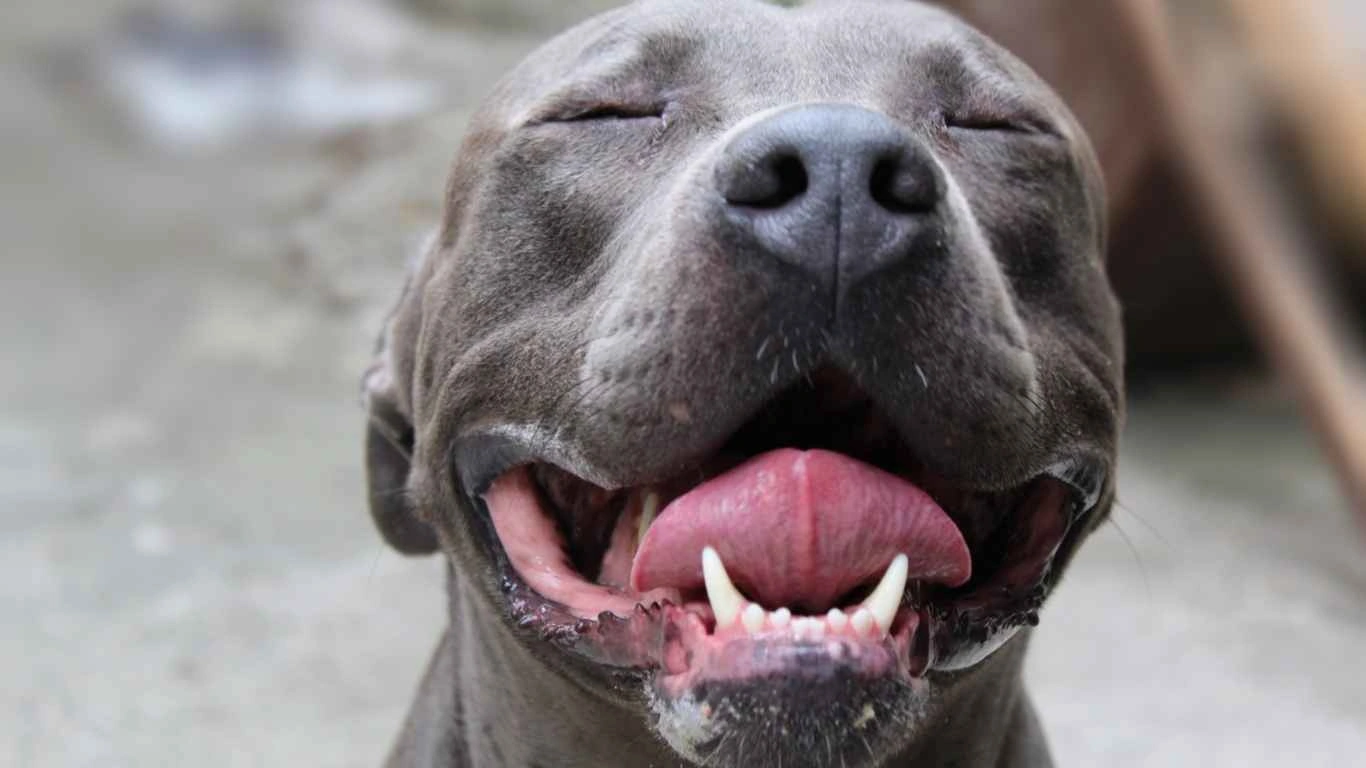How to Balance a Diet for a Growing Puppy: Expert Feeding Tips
As an Animal Care Specialist with years of hands-on experience working in both pet clinics and shelters, I’ve seen countless puppies coming in with different dietary needs, from undernourished rescues to well-fed puppies from breeders. It’s no secret that proper nutrition during the first year of a puppy’s life is crucial for their health, growth, and overall well-being. But if you’re wondering how to balance a diet for a growing puppy, you’re in the right place. Getting this balance right can be tricky, especially with the abundance of food options out there, but trust me, it’s well worth the effort!
Why Puppy Nutrition is Crucial

The first year of your puppy’s life is a time of rapid growth, and the nutrients they consume directly affect their development. Puppies need more than just calories; they need a mix of protein, fat, and carbohydrates in the right amounts to support their active bodies. Whether you’re caring for a Golden Retriever or a tiny Chihuahua, each breed has its own needs that must be addressed when creating a balanced diet.
What Happens When You Get the Balance Wrong?
As a pet professional, I’ve seen the impact of poor nutrition on growing puppies—ranging from lethargy and stunted growth to joint problems and coat issues. But it’s not just about providing food. You also need to understand the nutritional content of what you’re feeding them, because not all dog foods are created equal. Feeding a growing puppy too much of one thing (like protein) or too little of another (like fats or fiber) can lead to serious long-term issues.
Key Nutrients for a Growing Puppy
It’s easy to get overwhelmed with all the puppy food choices out there, but here are the key nutrients that should be included in your puppy’s diet:
- Protein: The foundation of muscle growth and tissue repair. Puppies need a high-quality source of animal protein like chicken, turkey, or lamb.
- Fats: Essential for energy and healthy brain development. Omega-3 and Omega-6 fatty acids are particularly important.
- Carbohydrates: Provide energy and aid digestion. Look for whole grains and vegetables like sweet potatoes or rice.
- Vitamins and Minerals: These help with bone development, immune function, and overall health. Key minerals like calcium and phosphorus are vital, but the ratio between them must be carefully balanced to avoid issues like bone deformities.
- Water: Don’t forget hydration! Fresh, clean water should always be available to your puppy.
How to Choose the Right Puppy Food

Choosing the right food for your puppy can feel like walking through a maze. From dry kibble to wet food, and everything in between, the options are endless. Here’s a quick guide to help you make the right choice:
Dry Food (Kibble)
Dry food is a popular option due to its convenience and ability to keep your puppy’s teeth clean. When picking a kibble, always check the ingredient list. The first few ingredients should be high-quality protein sources (not by-products or fillers). Avoid foods that list “corn” or “soy” as the main ingredient—these don’t offer much nutritional value for your growing pup.
Wet Food
Wet food is often more palatable for puppies, especially picky eaters. However, it’s important to note that wet food tends to be higher in fat and calories, which might not be ideal for puppies prone to overeating or gaining too much weight. When selecting a wet food, ensure it’s made with real meat and not just a bunch of fillers.
Raw Diets and Home-Cooked Meals
Some pet owners prefer to prepare their puppies’ food at home. A raw or home-cooked diet can offer more control over the ingredients, but it requires a lot of knowledge and effort to ensure it’s balanced properly. Consulting a vet or pet nutritionist is crucial if you’re going down this route, as it’s easy to unintentionally leave out essential nutrients.
Feeding Guidelines: How Much and How Often?
Every puppy is different, so the amount of food they need can vary based on their breed, age, and activity level. As a rule of thumb, puppies require more frequent meals than adult dogs—typically three to four meals per day. It’s also important to follow the portion recommendations on the dog food packaging, but be prepared to adjust based on your puppy’s specific needs. If they’re gaining too much weight, cut back a little. If they’re not gaining enough weight or seem sluggish, they might need a little extra food.
Understanding Portion Sizes

Overfeeding is a common mistake many new puppy owners make. It’s tempting to give your pup all the food they can eat, especially when they’re so adorable and begging for more. But too much food can lead to obesity and other health problems down the line. The key is consistency and moderation.
Adjusting Portion Sizes as Your Puppy Grows
As your puppy grows, their dietary needs will change. You’ll need to adjust their portion sizes as they transition from puppy food to adult food, which usually happens around 12 months of age. Keep an eye on their weight and consult your vet to ensure you’re feeding them the right amount for their current stage of growth.
Monitoring Your Puppy’s Growth and Adjusting Their Diet

Now that you’ve got the basics of puppy nutrition down, it’s time to get into one of the most important aspects: monitoring your puppy’s growth and adjusting their diet accordingly. Growth happens fast during the first year, and it’s easy to overlook subtle changes in your puppy’s body. As a pet care specialist, I’ve seen it time and time again—puppies that start out with an ideal weight and diet, only to be overfed or underfed as they grow, leading to potential health issues.
How to Track Your Puppy’s Growth
When you bring your puppy home, you’ll want to track their weight and overall health. This is something I recommend to all pet owners. It’s not just about making sure they’re not gaining too much weight but also ensuring they’re hitting the right milestones in terms of height, muscle development, and energy levels.
Use a scale to check their weight weekly, and note any changes in their energy levels or coat quality. A sudden drop in energy or a dull coat could indicate a dietary imbalance. Conversely, if your puppy seems excessively hyper or is gaining weight too quickly, you might need to cut back on their portions.
Understanding the Growth Stages of Puppies
Puppies don’t grow at a constant rate. Just like humans, their growth comes in spurts. Here’s a general breakdown of what you can expect:
- 0-3 Months: This is the stage where puppies develop rapidly. They should be eating puppy food designed for rapid growth, packed with protein and fats.
- 3-6 Months: At this stage, puppies are still growing but at a slightly slower pace. They will need a diet that provides a balance of protein for muscle development and fats for energy.
- 6-12 Months: While your puppy is likely getting close to their adult size, they’re still considered in the “adolescent” stage. Nutrition continues to be essential as they fine-tune their muscle mass and bone density.
Common Mistakes in Feeding Puppies

Over the years, I’ve witnessed countless feeding mistakes that can easily be avoided. Some of these mistakes are so common that they almost seem like a rite of passage for new puppy owners. But with a little bit of knowledge, they’re simple to prevent. Let’s dive into a few of the most common errors I’ve come across.
Overfeeding Your Puppy
Overfeeding may sound like a weird thing to worry about, especially when you see how much your puppy loves their food. But trust me, giving them too much food can lead to obesity, which is a huge issue for growing puppies. Many owners think that because their puppy is always hungry, they should give them more food. In reality, your puppy’s appetite is more likely a sign of growth rather than a need for excessive food. Follow your vet’s recommendations for portions, and always measure the food you give them.
Feeding the Wrong Type of Food
It’s easy to get swept up in marketing hype or go for the cheapest option on the shelf. But not all puppy foods are created equally. You want to avoid foods that have fillers like corn, wheat, or soy, which don’t provide the essential nutrients your puppy needs for proper growth. Always opt for food that lists high-quality protein (like chicken, lamb, or turkey) as the first ingredient.
Not Adjusting Their Diet as They Grow
Your puppy’s dietary needs will change as they age. Unfortunately, many owners fail to adjust their puppy’s food intake as their growth slows down after 6 months. If you’re still feeding your puppy the same amount of food that you did when they were 3 months old, they may start to pack on the pounds. Regularly check your puppy’s weight and talk to your vet about whether it’s time to transition them to less calorie-dense food.
What to Do if Your Puppy’s Diet Isn’t Working

If you’ve been feeding your puppy according to the guidelines, and they still seem to be having health issues, it might be time to reassess their diet. Here are a few signs that something might not be working:
- Digestive Problems: If your puppy has constant diarrhea, vomiting, or constipation, their food may not be agreeing with them. Talk to your vet about trying a different food or adding a digestive supplement.
- Weight Issues: If your puppy is gaining too much weight, it may be a sign you’re overfeeding, or the food might be too calorie-dense. On the flip side, if they’re not gaining weight properly, it could be a sign of a nutritional deficiency, and you’ll want to discuss it with your vet.
- Allergic Reactions: Some puppies have sensitivities to certain ingredients. If you notice skin irritation, itching, or hair loss, this could be a sign that your puppy is allergic to something in their food. Consult with your vet to find a food that avoids these allergens.
In my experience, a lot of the time, these issues can be solved by switching to a higher-quality food or adjusting their portion sizes. But sometimes, it might take a bit of trial and error to find what works best for your growing puppy.
Transitioning from Puppy Food to Adult Food

As your puppy grows, their nutritional needs will change, and eventually, you’ll need to transition them from puppy food to adult food. This is one of the most significant dietary changes your puppy will experience, and it’s important to get it right. Transitioning too quickly can upset your puppy’s stomach, while transitioning too late could result in them not getting the nutrients they need for proper muscle and bone development.
When to Make the Switch
Typically, puppies are ready to transition to adult food between 12 and 18 months, depending on their breed and size. Smaller breeds tend to mature faster, while larger breeds may require the extra nutrition found in puppy food for a bit longer. I always recommend consulting your veterinarian to get a timeline based on your puppy’s specific growth pattern. Don’t rush it—switching too early can leave your puppy lacking the proper nutrition for those crucial growth months.
How to Transition Smoothly
When you’re ready to start the transition, take your time! Gradually mix adult food into their current puppy food over a period of 7-10 days. Start with a small amount of adult food and slowly increase it while decreasing the puppy food. This will help prevent any digestive issues like diarrhea or vomiting, which can be common when switching foods. Pay attention to your puppy’s response—if they seem to have trouble adjusting, you might want to slow down the process or try a different adult food that’s better suited for their stomach.
Supplements for Growing Puppies

In addition to their regular food, some puppies might benefit from certain nutritional supplements. While a high-quality, balanced diet should provide most of what your puppy needs, there are instances where additional supplements can support their health.
When to Consider Supplements
Supplements aren’t always necessary, but they can be beneficial in certain situations. If your puppy is experiencing growth issues, joint pain, or digestive problems, it might be worth considering a supplement. I’ve worked with many puppies that, despite their owners’ best efforts, still needed that little extra boost to grow properly or stay healthy. Here are a few common supplements you might want to consider:
- Omega-3 Fatty Acids: These are essential for brain and eye development and can also help with coat and skin health. Omega-3s are particularly useful for puppies in the middle of rapid growth stages.
- Joint Supplements: Large breed puppies, especially, can benefit from joint supplements that contain glucosamine and chondroitin to support bone health and prevent joint problems as they grow.
- Probiotics: If your puppy has digestive issues or a sensitive stomach, probiotics can help promote a healthy gut and better nutrient absorption.
Consult Your Vet About Supplements
Before adding supplements to your puppy’s diet, always consult your veterinarian. Over-supplementing can cause problems, and not all puppies need extra nutrients beyond what’s provided in their food. Your vet can guide you in choosing the right supplements if they’re necessary for your puppy’s specific needs.
How to Keep Your Puppy’s Diet Interesting
Just like us, puppies can get bored with their food if it’s the same every day. A monotonous diet can lead to picky eating or even food aversions. As an Animal Care Specialist, I’ve seen many pet owners struggle with feeding time when their puppy just doesn’t seem interested in their food anymore. Here are a few tips to keep your puppy’s meals exciting:
Rotate Protein Sources
Many high-quality puppy foods offer a variety of protein sources, such as chicken, lamb, turkey, and fish. I recommend rotating between different protein sources every few weeks to keep things fresh and introduce your puppy to different flavors. This helps maintain their interest in food and also ensures they’re getting a balanced mix of amino acids, which are essential for muscle and bone development.
Add Toppers or Mix-ins
If your puppy is becoming picky, adding a food topper or mixing in something extra can make their meal more appetizing. I’ve had success with adding a bit of plain yogurt, pumpkin, or low-sodium broth to enhance the flavor. These additions also provide some extra nutrients like fiber, probiotics, and vitamins.
Consider Homemade Treats
Homemade treats can be a great way to mix things up and provide extra love. You can make healthy, puppy-friendly treats like peanut butter biscuits or frozen veggie pops. Just make sure any treats are given in moderation, and avoid anything that could upset your puppy’s stomach.
References
Disclaimer
While I’ve shared insights based on years of experience as an Animal Care Specialist, please note that this article is for informational purposes only and should not replace professional veterinary advice. Always consult with your veterinarian regarding your puppy’s specific dietary needs, as they can provide personalized recommendations based on your puppy’s age, breed, health status, and lifestyle. A tailored diet plan is essential for ensuring your puppy grows up to be a healthy, happy dog.






